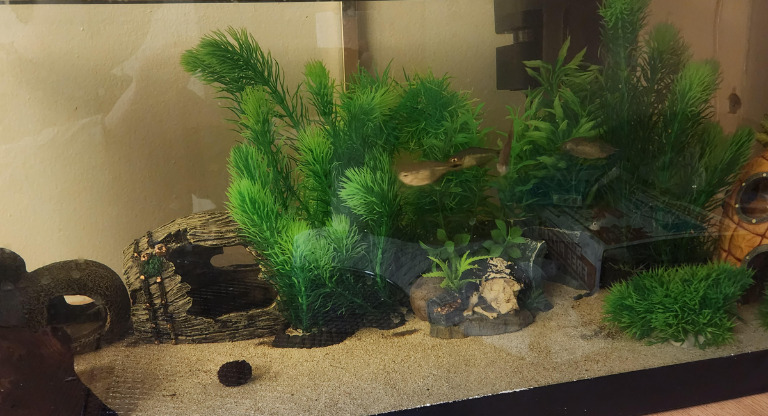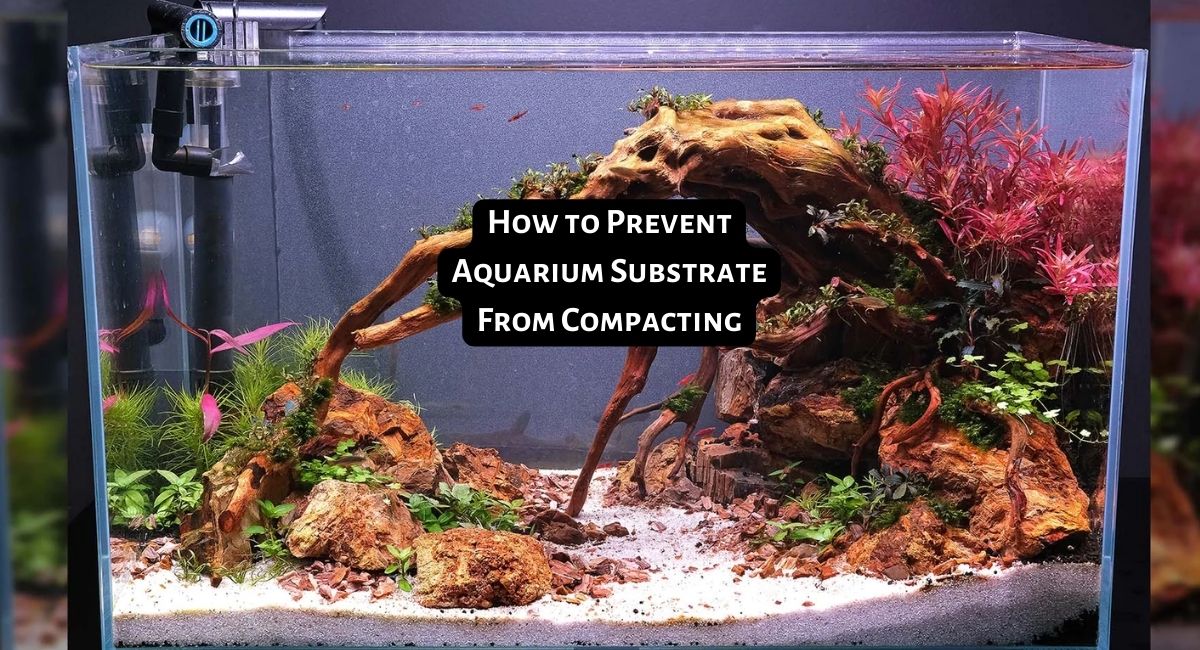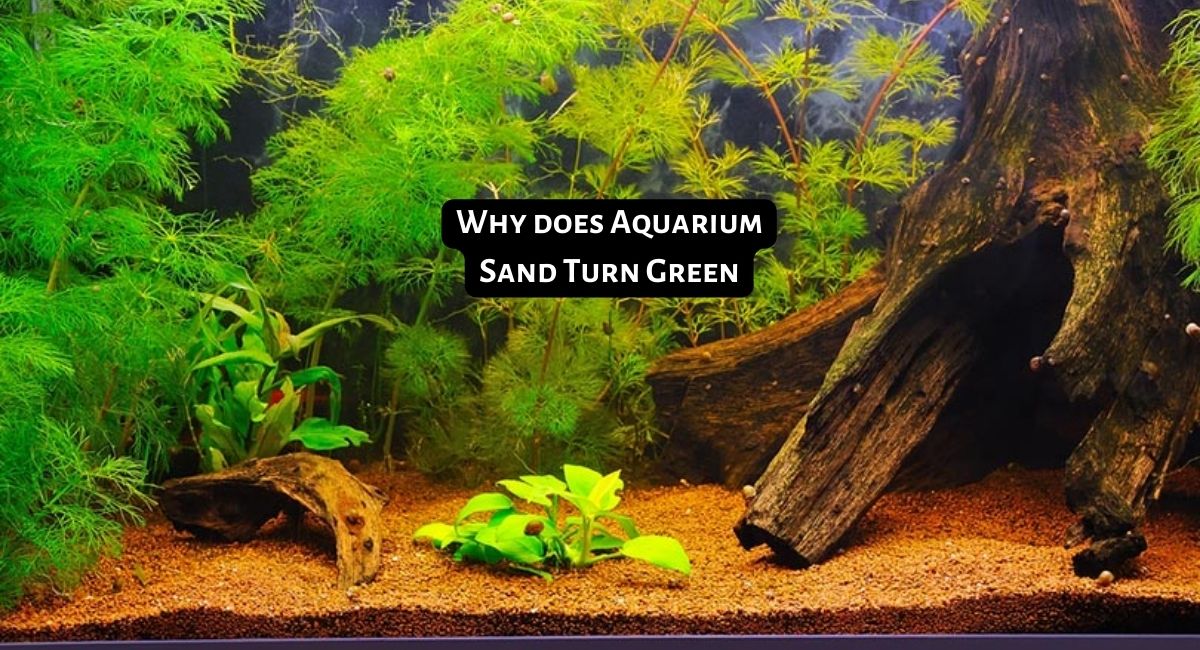Smartplantedaquarium.com participates in affiliate marketing programs. We may earn commissions on purchases made through our affiliate links. This doesn't affect our content or recommendations and we only recommend products we would put in our own tanks.
When setting up a new aquarium, choosing the right sand is an important decision that can impact the aesthetics and health of your tank. From natural coarse sands to fine decorative substrates, there are many options available. The texture and grain size of the sand you select will affect everything from waste removal to the roots of live plants. Moreover, factors like color, material, and additive ingredients should be considered as they can influence the environment inside your aquarium. In this blog post, we’ll dive into the pros and cons of different types of freshwater aquarium sands. We’ll compare coarse sands versus fine sands and discuss how grain shape and size influence tank maintenance. We’ll also recommend some high-quality brands and review top picks for planted tanks, African cichlids, saltwater tanks and more. With the right aquarium sand choice, you can create a stunning aquatic landscape that both you and your fish will love.
Contents
- Pros and Cons of Sand for Aquarium Plants
- Which Aquarium Plants Grow best in sand substrate
- Aquarium plants to avoid when using sand substrate
- Types of Aquarium Sand
- Best Aquarium Sand for Plants
- What to Consider When Buying Aquarium Sand
- How Much Aquarium Sand Do You Need
- Tips for Using Sand in a Planted Aquarium
- Conclusion
- Frequently Asked Questions
Pros and Cons of Sand for Aquarium Plants
Sand as a substrate for aquarium plants has its own set of pros and cons. Let’s examine them based on the provided search results:
Pros of Sand for Aquarium Plants
Natural look: Sand provides a natural and aesthetically pleasing appearance to the aquarium, enhancing the overall visual appeal.
Variety of colors: Sand comes in a wide range of colors and shades, allowing for customization and creating the desired look for the aquarium.
Cost-effective: Sand is generally more affordable than other types of substrates, making it a budget-friendly option.
Natural environment: Sand mimics the natural habitat of many aquatic species, providing them with a familiar environment.
Water quality improvement: Sand can serve as a surface for beneficial bacteria to colonize, aiding in biological filtration and improving water quality.
Cons of Sand for Aquarium Plants
Messiness: Improper setup or disturbance by fish can cause sand to become easily stirred up, leading to cloudy water.
Difficult to set up: Care must be taken during the initial setup to avoid creating a mess. Rinsing the sand thoroughly before adding it to the aquarium is crucial.
Difficult to vacuum: Due to its fine texture, sand can be challenging to vacuum, as it can get stuck in the vacuum head and cause clogs.
Nutrient limitation: Sand itself is an inert substrate, lacking essential nutrients for plant growth. This means that regular feeding with root tabs or other nutrient supplements is necessary for the plants to thrive.
Plant species limitation: Not all aquarium plants are suitable for growing in sand. Some plants may require a more nutrient-rich substrate or may have difficulty anchoring their roots in sand .
It’s important to consider these pros and cons when deciding whether to use sand as a substrate for aquarium plants. While sand can offer a natural look and cost-effectiveness, it requires careful maintenance and supplementation of nutrients for optimal plant growth. Additionally, the choice of plant species should be considered to ensure compatibility with a sandy substrate.
Which Aquarium Plants Grow best in sand substrate
- Anacharis
- Rotala
- Cryptocoryne
- Amazon Sword
- Ludwigia Repens
- Anubias
- Java Fern
- Java Moss
- Italian Val
- Camboba
Aquarium plants to avoid when using sand substrate
Plants with weak or shallow roots: Sand can be more compact compared to other substrates, which can make it challenging for plants with weak or shallow root systems to anchor themselves properly and obtain nutrients. These plants may struggle to establish and grow effectively in a sand substrate. Examples of plants with weak or shallow roots include some carpeting plants like Glossostigma elatinoides or Hemianthus callitrichoides.
Heavy root feeders: Some plants are known as heavy root feeders, meaning they rely significantly on nutrient uptake through their roots. In a sand substrate, nutrient availability might be limited, especially if the sand lacks additional fertilizers or nutrients. Plants that fall into this category include Amazon Swords (Echinodorus species) and Cryptocoryne species. While these plants can grow in sand, they might benefit from supplemental root tabs or a nutrient-rich substrate.
Plants requiring deep planting: Certain plants need to be planted deeply in the substrate to thrive. Sand substrates may not provide the stability or depth required for such plants. It can lead to uprooting or instability when attempting to plant them deeply. Examples of plants that require deep planting are some varieties of Aponogeton species.
Fine-rooted plants: Plants with fine, delicate roots might face challenges in a sand substrate. Fine roots can struggle to penetrate the compact sand, impacting their ability to establish and absorb nutrients effectively. Hairgrass (Eleocharis spp.) is an example of a fine-rooted plant that may not perform optimally in a sand substrate.
Remember that while these plants may face challenges in a sand substrate, it doesn’t mean they cannot be grown successfully with proper care and adjustments. It’s recommended to provide additional supplements like root tabs or liquid fertilizers to support nutrient availability for these plants. Monitoring their growth and making adjustments as necessary will help ensure their well-being in a sand substrate.
Types of Aquarium Sand
Aquarium sand is a popular substrate for aquariums, and there are several types of sand available. Here are some of the most common types of aquarium sand:
- Play Sand
- Blasting Sand
- Silica Pool Sand
- River Sand
- Quartz Sand
- Sea Sand
- Black Sand
- White Sand
- Pit Sand
- Beach Sand
- Masonry Sand
- Fill Sand
- Specialty Sands
- Malang Sand
- Bali Sand
- Yamaya Sand
It is important to note that sand from a natural source such as a river, pit, or sea is best for aquariums. Additionally, some types of sand, such as play sand and blasting sand, may contain impurities that can harm fish and other aquatic life. Therefore, it is important to research and choose a sand that is safe for your aquarium.
Best Aquarium Sand for Plants
Brief description, features, and pros/cons of each gravel option
- Best sand for planted tanks – Flourite Black Sand
- Best sand for for bottom-dwelling fish – Caribsea Super Naturals Moonlight Sand
- Best white sand – Stoney River White Aquatic Sand
- Best black sand – Nature’s Ocean Aqua Terra Black Sand
- Best fine sand – LANDEN Namale Nature Aquarium Sand
What to Consider When Buying Aquarium Sand
When buying aquarium sand, there are several factors to consider to ensure you choose the right sand for your aquarium setup. Here are some insights gathered from the provided web search results:
Type of Sand: There are different types of aquarium sand available, such as play sand, silica-based sand, or specialized aquarium sands. Each type has its advantages and disadvantages, including factors like grain size, color, and functionality. Understanding the purpose and characteristics of each sand type is important when making your selection.
Compatibility with Tank Organisms: Consider the needs and preferences of the organisms in your tank, such as fish, invertebrates, or live plants. Some sand types may be more suitable for specific organisms. For example, certain fish species may prefer finer sand for sifting behavior, while others may require coarser sand to prevent sand impaction. It’s important to research the specific requirements of your tank inhabitants before choosing the sand.
Tank Size: The size of your tank is a crucial factor when determining the amount of sand you need. It’s generally recommended to have a depth of around 1 inch of sand in the tank. Calculate the volume of sand needed by multiplying the length and width of your tank by 1 inch.
Color and grain size: Sand comes in a variety of colors and grain sizes, so you’ll want to choose one that complements the look of your aquarium. Keep in mind that darker sand can make your aquarium look smaller, while lighter sand can make it look larger.
Composition and Safety: Ensure that the sand you choose is safe for your aquarium inhabitants. Some sands may contain impurities or chemicals that could be harmful to fish, invertebrates, or plants. Look for sands that are specifically marketed for aquarium use to minimize any potential risks to your tank’s ecosystem.
Maintenance and Cleaning: Consider how easy it is to clean and maintain the sand. Some sands may compact easily, making it challenging to clean debris or perform routine maintenance. Sands that allow water flow and easy siphoning can make tank maintenance more convenient.
Aesthetic Considerations: The appearance of the sand can also play a role in your decision-making process. Different sand colors and grain sizes can create various visual effects in the aquarium. Choose a sand that complements the overall aesthetic of your tank.
Brand reputation: It’s important to choose a reputable brand when buying aquarium sand to ensure that it is of good quality and won’t harm your fish or aquarium. Do some research and read reviews before making a purchase
Remember to conduct thorough research and consult reliable sources to make an informed decision based on the specific needs of your aquarium. Additionally, it’s recommended to rinse the sand thoroughly before adding it to your tank to remove any dust or debris.
How Much Aquarium Sand Do You Need
Tips for Using Sand in a Planted Aquarium
Using sand as a substrate in a planted aquarium can create a beautiful and natural-looking environment for your aquatic plants. Here are some tips to consider when using sand in your planted aquarium:
Choose the Right Sand: Select a type of sand that is suitable for aquarium use, such as aquarium sand or pool filter sand. Avoid sands with sharp edges or high levels of dust. Look for sands that are inert and won’t alter water chemistry.
Preparing the Sand: Rinse the sand thoroughly before adding it to the aquarium. This helps remove any debris, dust, or impurities that may cloud the water or affect the health of your plants and aquatic life. Rinse the sand in small batches using clean water until the water runs clear.
Consider Substrate Fertilization: While sand itself may not provide many nutrients for plant growth, you can use root tabs or add substrate fertilizers to provide essential nutrients for your plants. Insert root tabs into the sand near the plant roots or use liquid fertilizers according to the product instructions.
Layer Thickness: Aim for a sand layer thickness of around 1 to 2 inches (2.5 to 5 cm) in your planted aquarium. This provides sufficient depth for plant roots to anchor while allowing water flow and nutrient exchange. Adjust the thickness based on the specific needs of your plants and the size of your aquarium.
Planting Techniques: When planting your aquatic plants in sand, be careful not to bury the roots too deeply. Create small depressions or holes in the sand to accommodate the roots and gently press the plants into place. Avoid packing the sand tightly around the roots, as it can restrict oxygen and nutrient uptake.
Water Circulation: Consider the water circulation and flow in your aquarium. Sand can sometimes compact over time, potentially leading to anaerobic pockets. To avoid this, use powerheads, air stones, or other forms of water movement to maintain adequate oxygenation and prevent debris buildup in the sand.
Maintenance: Regular maintenance is essential when using sand as a substrate. Vacuum the surface of the sand during water changes to remove debris and accumulated waste. Be gentle to avoid disturbing the root systems of your plants. If you notice any areas of compacted sand, use a gentle tool to loosen and aerate those areas.
Monitor Water Parameters: Keep an eye on water parameters such as pH, hardness, and nutrient levels in your planted aquarium. Test the water regularly to ensure the conditions are suitable for the plants and aquatic life in your tank. Adjust lighting, fertilization, and water changes as needed to maintain a healthy environment.
Use sand for specific styles and layouts: Sand substrates are naturally lighter than soils and this allows the aquascaper to achieve a variety of styles and layouts, opening up more possibilities.
Conclusion
Frequently Asked Questions
Can aquarium plants grow in aquarium sand?
Is silica sand good for aquarium plants?
Do aquarium plants grow better in sand or gravel?
What kind of sand is best for plant drainage?
Can you mix sand and plant substrate?
How deep should sand be in planted aquarium?






